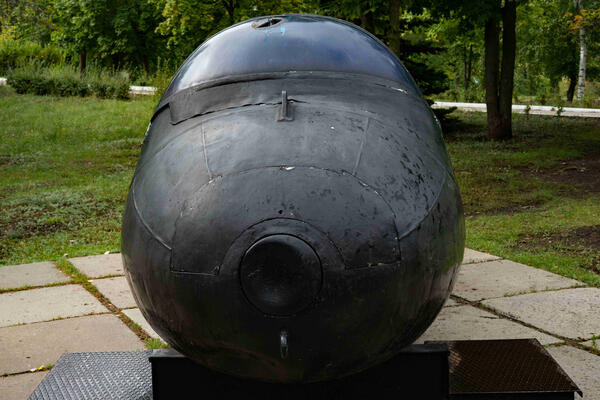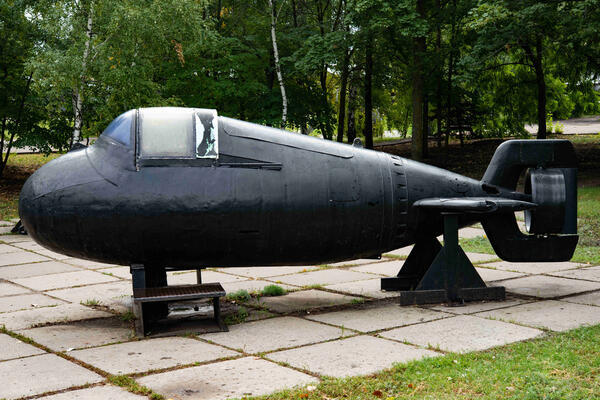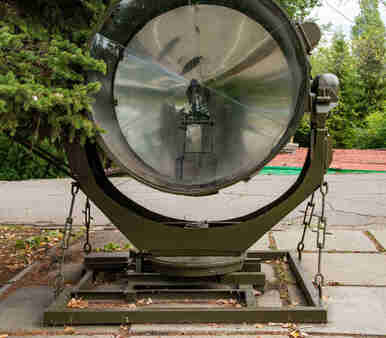The Triton-1M midget submarine for transportation of combat swimmers was developed at the Volna Central Design Bureau in Leningrad. This project began in 1966 when special purpose units were formed in the Soviet Navy.
Two prototypes of the midget submarine were built at the Novo-Admiralty Plant in 1970. By the end of 1971, assembly work had begun, and in 1972 they were transported to the Black Sea base of the Gidropribor enterprise. There they were subjected to factory sea trials, which lasted until the beginning of 1973, when their production started.
The Triton-1M was intended for underwater delivery of divers to areas of special operations of the Navy, as well as for research and rescue operations, inspection or repair of underwater structures. The Triton-1M had a teardrop hull. It was divided into compartments for different purposes. The bow housed a two-person “wet” type cabin for divers. It was decided to cover it with a transparent canopy.
The hull of the midget submarine was made of aluminum-magnesium alloy. In terms of propulsion, the submarine had a single propeller. It was a shrouded propeller powered by a main electric motor with a nominal power of 3.4 kW.
The crew were equipped with an MGV-3 hydroacoustic station, navigation aids, an automatic guidance system and a radio station. The central sealed compartment housed the SC-300 silver–zinc batteries. A 4.6 horsepower P32M electric motor was installed in the “dry” stern.
The mini submarine was 5 m in length with a width/height of less than 1.4 m. Its total displacement was 3.7 tons. The low-power engine provided acceleration to 6.5 knots (12 km/h); the batteries gave a range of 35 miles.
It could dive to a depth of 40 m. Automated operation was limited to 7.5 hours. If necessary, the transporter lay on the sea floor and stayed at the bottom for up to 10 days. The Triton-1M was mass-manufactured in 1975–1980. A total of 32 units were built.
Two prototypes of the midget submarine were built at the Novo-Admiralty Plant in 1970. By the end of 1971, assembly work had begun, and in 1972 they were transported to the Black Sea base of the Gidropribor enterprise. There they were subjected to factory sea trials, which lasted until the beginning of 1973, when their production started.
The Triton-1M was intended for underwater delivery of divers to areas of special operations of the Navy, as well as for research and rescue operations, inspection or repair of underwater structures. The Triton-1M had a teardrop hull. It was divided into compartments for different purposes. The bow housed a two-person “wet” type cabin for divers. It was decided to cover it with a transparent canopy.
The hull of the midget submarine was made of aluminum-magnesium alloy. In terms of propulsion, the submarine had a single propeller. It was a shrouded propeller powered by a main electric motor with a nominal power of 3.4 kW.
The crew were equipped with an MGV-3 hydroacoustic station, navigation aids, an automatic guidance system and a radio station. The central sealed compartment housed the SC-300 silver–zinc batteries. A 4.6 horsepower P32M electric motor was installed in the “dry” stern.
The mini submarine was 5 m in length with a width/height of less than 1.4 m. Its total displacement was 3.7 tons. The low-power engine provided acceleration to 6.5 knots (12 km/h); the batteries gave a range of 35 miles.
It could dive to a depth of 40 m. Automated operation was limited to 7.5 hours. If necessary, the transporter lay on the sea floor and stayed at the bottom for up to 10 days. The Triton-1M was mass-manufactured in 1975–1980. A total of 32 units were built.






